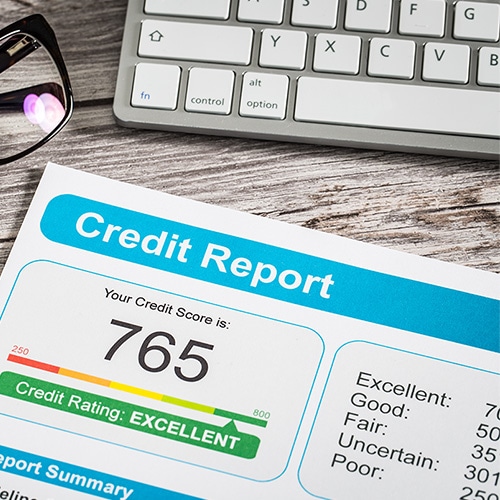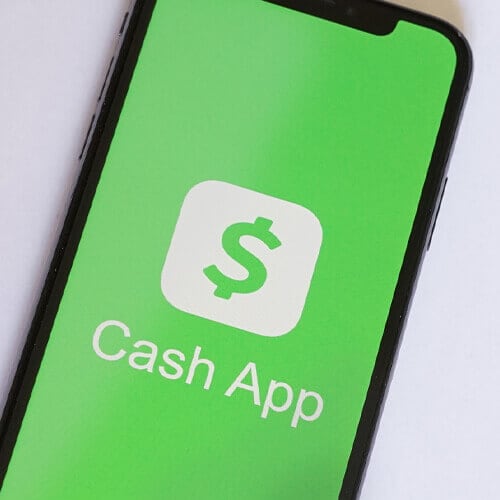The goal of a bank scam is typically to steal money or financial information. If an online attacker is successful, it can be difficult (and sometimes impossible) to recover lost funds. In the end, the time it takes to recover from this type of financial fraud mostly depends on how long it takes you to notice there’s a problem, whether the authorities catch the attacker, and if your bank can reverse the transactions.
In this guide, we'll tell you how to detect scams, share tips for protecting your earnings from financial fraudsters, and explain what your options are if you fall prey to a banking scam.
How do bank scams work?
“Bank scams” is an umbrella term for a wide range of specific schemes and ploys that can unfold in many different ways. But the basic way a bank scam works is the same. In all cases, a hacker:
- Selects a target: Attackers will usually target people they know have a lot of money or are vulnerable to attacks. However, some will wage a large-scale attack and rob anyone who falls for their stories or malware-ridden links.
- Researches the target: For victims with a substantial online presence, the attacker might use public information to perform a social engineering attack. They might also resort to phishing, malware, or website spoofing to access bank account login information.
- Scams the target: When the attacker manages to access their target’s bank account, they can drain the connected accounts. However, some might decide to gradually siphon the account over a longer period.
Beyond that, bank scams tend to work a bit differently depending on the category they fall under.
5 types of bank scams
Hackers are getting creative with their scams as online banking becomes more commonplace. Here are five examples of current bank scams you should look out for:
1. Advance-fee scam
An advance-fee scam involves an attacker tricking their target into paying a deposit or other upfront charges before they agree to ship a product or schedule a service. This type of scam doesn’t involve bank infiltration, but it often involves using payment services like CashApp and Zelle to exploit consumers and harm their financial well-being.
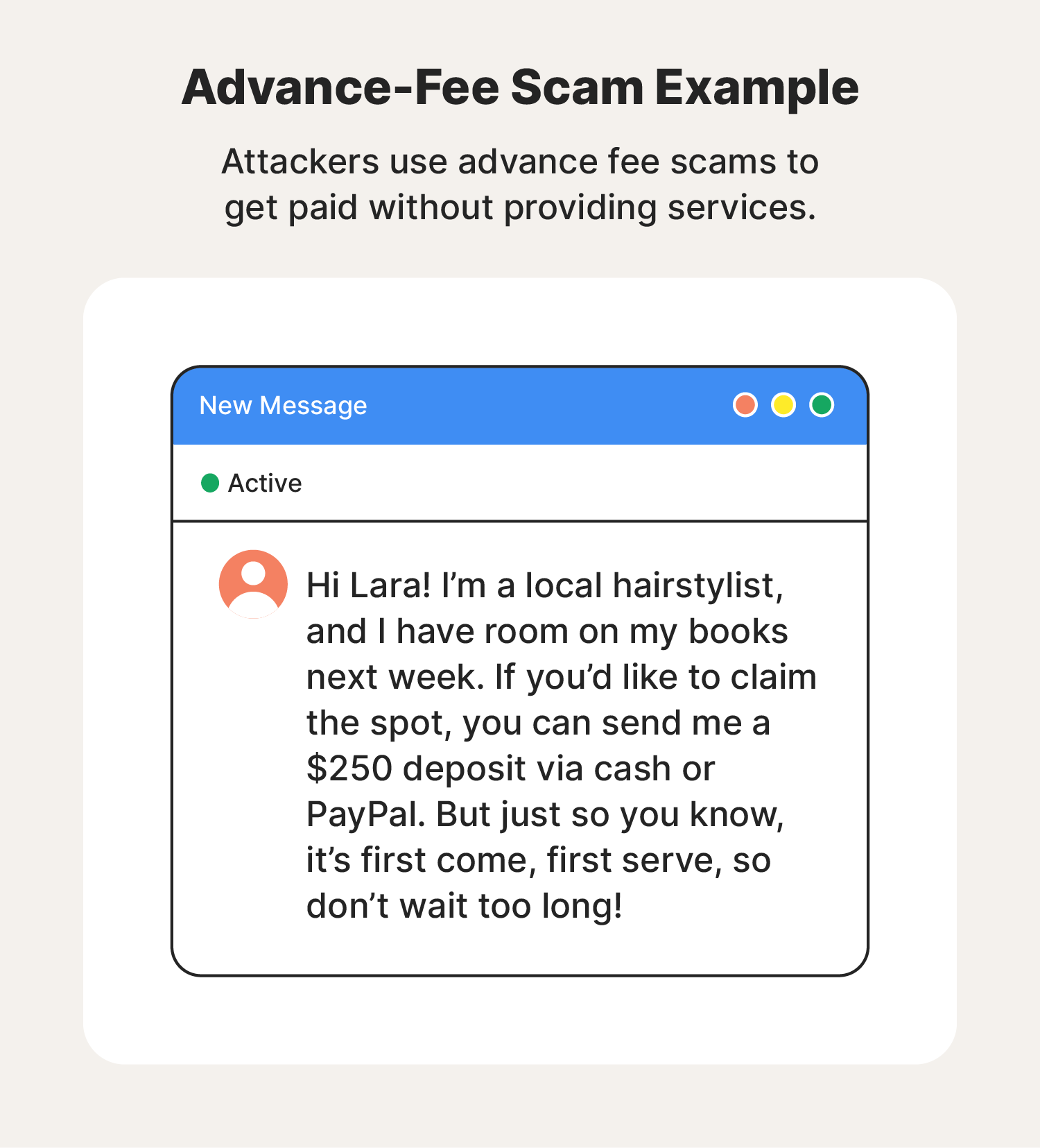
- Identify an advance fee scam: Don’t pay anyone who contacts you about services out of the blue, demands a deposit, and doesn’t have a strong online presence with positive reviews.
- Avoid advance fee scams: Research the seller to confirm if their offer is legitimate and use platforms with buyer protection for the deposit.
2. Check overpayment scam
An overpayment scam involves a scammer intentionally writing a check for too much money and asking the recipient to refund the difference. Typically, these checks are designed to bounce, and they’ll try to collect the money and disappear before the bank flags the deposit.
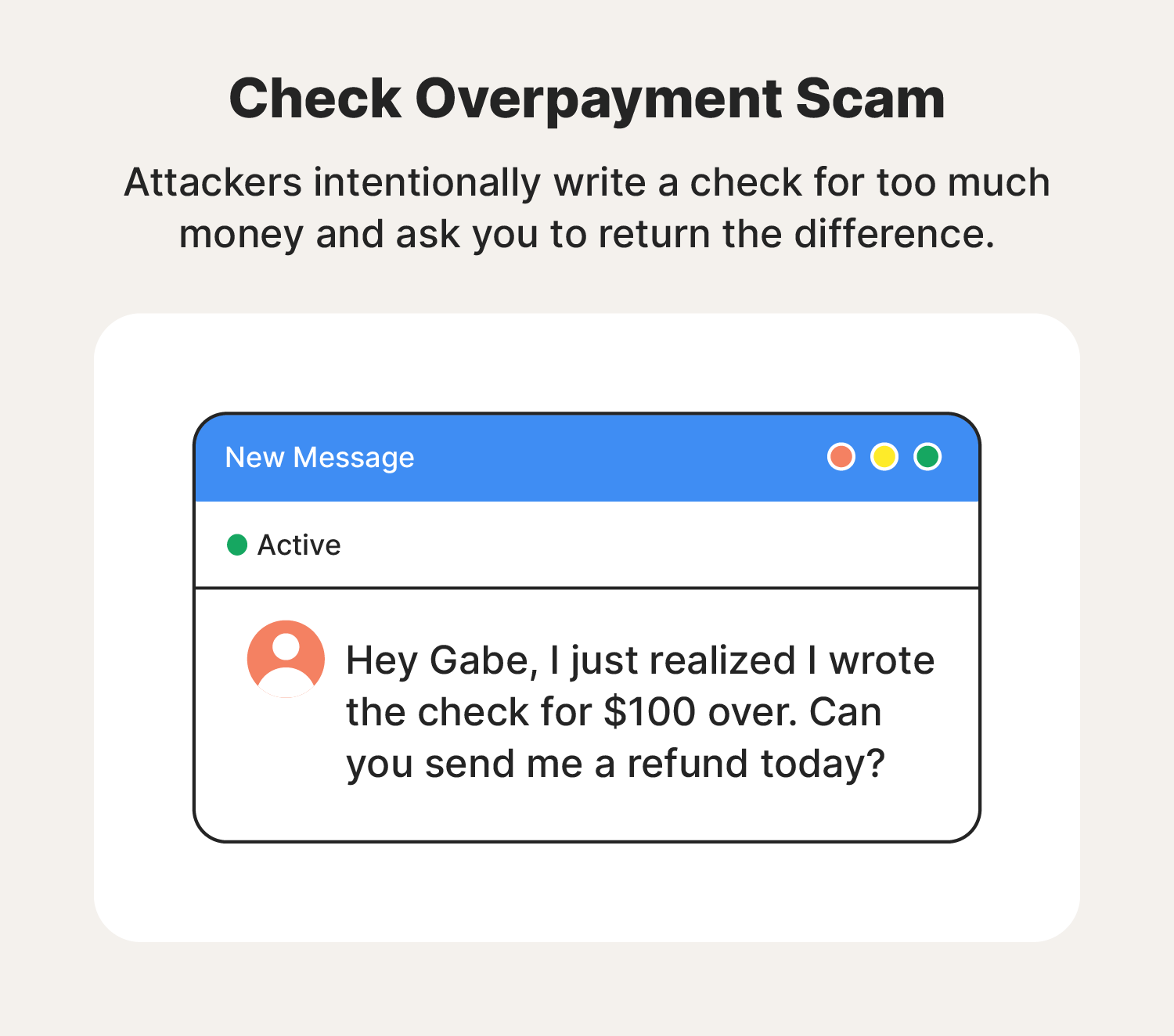
- Identify a check overpayment scam: Review the amount line and box to make sure they match the agreed-upon amount.
- Avoid check overpayment scams: Arrange to collect checks in person, verify that all of the information on the check is correct before you leave, and wait until the check clears to refund any money.
3. Fake check scam
Fake check scams involve attackers paying for goods or services with a phony check. This allows them to get away with stealing because it can take a few days for the bank to process the check and flag it as a counterfeit.
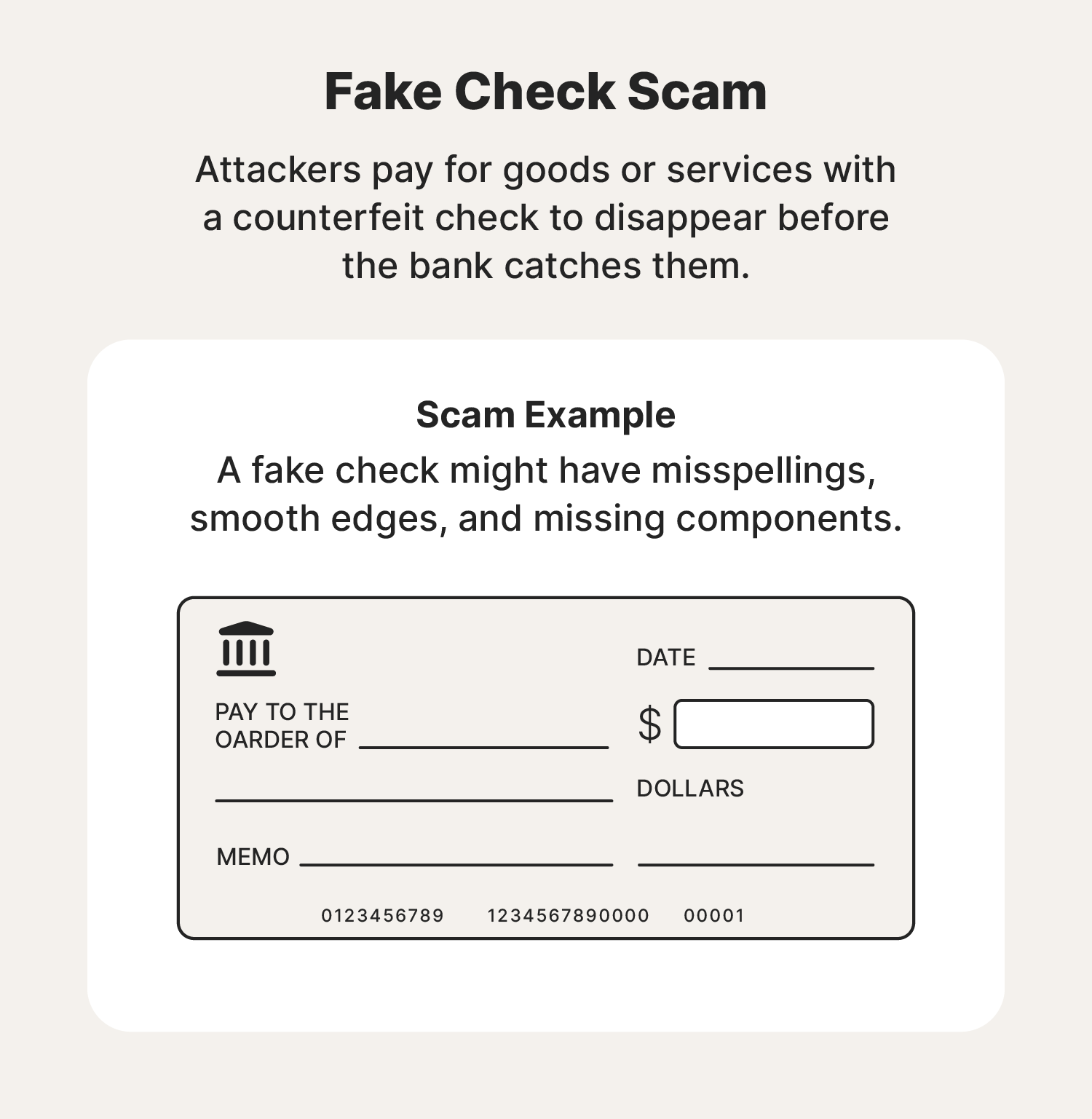
- Identify a fake check scam: Make sure the check is real by feeling the edges for one rough edge and looking for errors like misspelled words, security details, and missing components, which could signal check washing.
- Avoid a fake check scam: Request another form of payment or contact the person’s bank if there are issues with the check. To verify a check’s legitimacy, check the account holder’s information in the top left corner, and make sure the check has security features like bleeding ink, a padlock icon, and a security box.
4. Non-existent investment scam
Investment scams involve an attacker posing as a bank representative and offering bogus opportunities to invest in mutual funds, stocks, bonds, high-yield savings accounts, or certificates of deposit (CDs). Once a bank member sends the money or enters their login information on a spoofed website, the cybercriminal can re-route the funds to themselves.
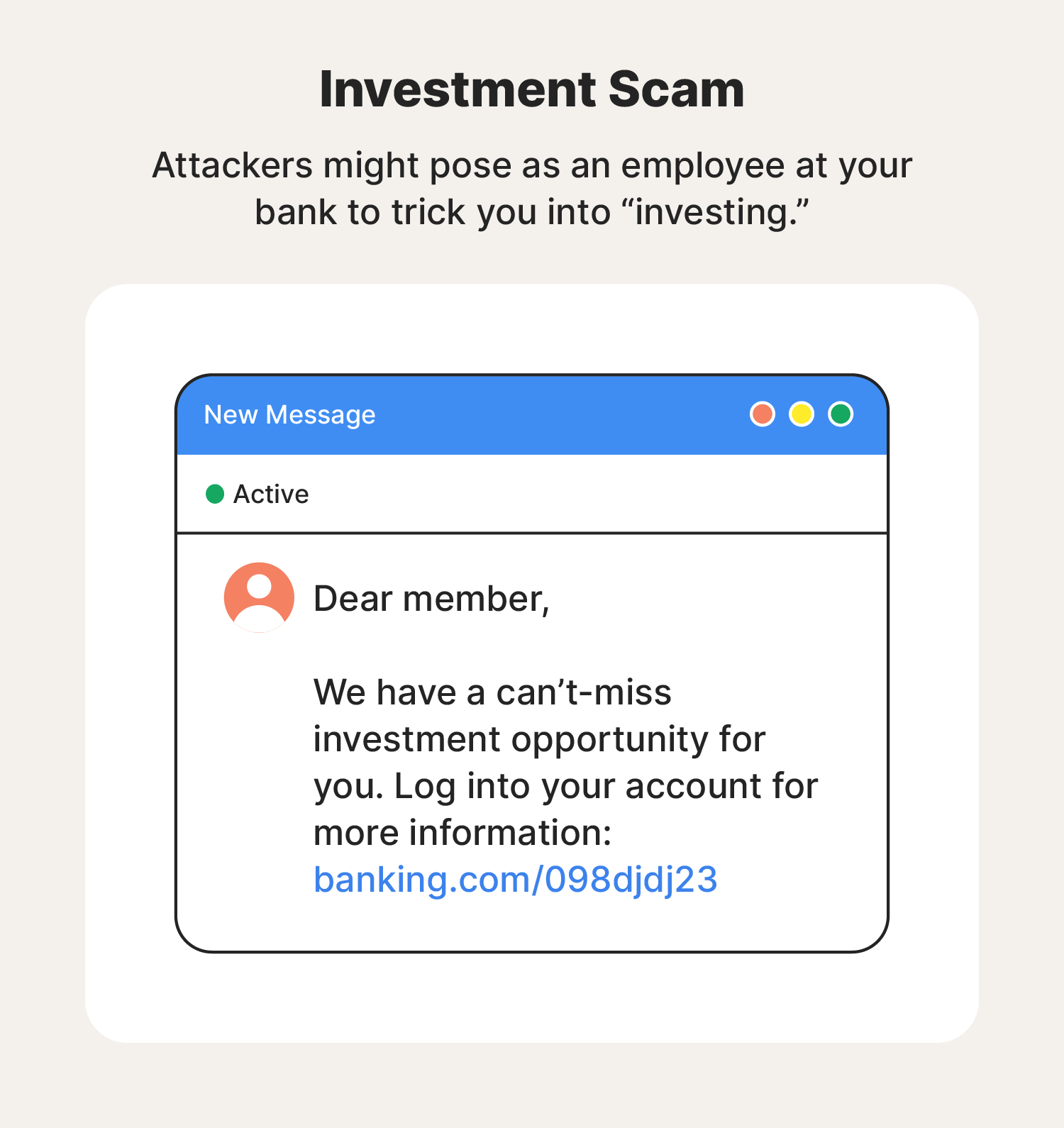
- Identify an investment scam: Be skeptical of unsolicited offers that sound too good to be true or use pressure tactics to urge you into taking action quickly.
- Avoid an investment scam: Contact your bank through official channels to verify the legitimacy of an opportunity, don’t trust “opportunities” that claim to have no downside, only discuss finances on secure channels, and don’t click suspicious links.
5. Automated payment scam
Automated payment scams typically happen when a fraudster already has their target’s account information. Using the account and routing numbers, they set up automatic payments to siphon funds out of the account over time. If they choose a small enough amount and the account holder doesn’t closely review their bank statements, the scammer can withdraw quite a bit of money before they notice.
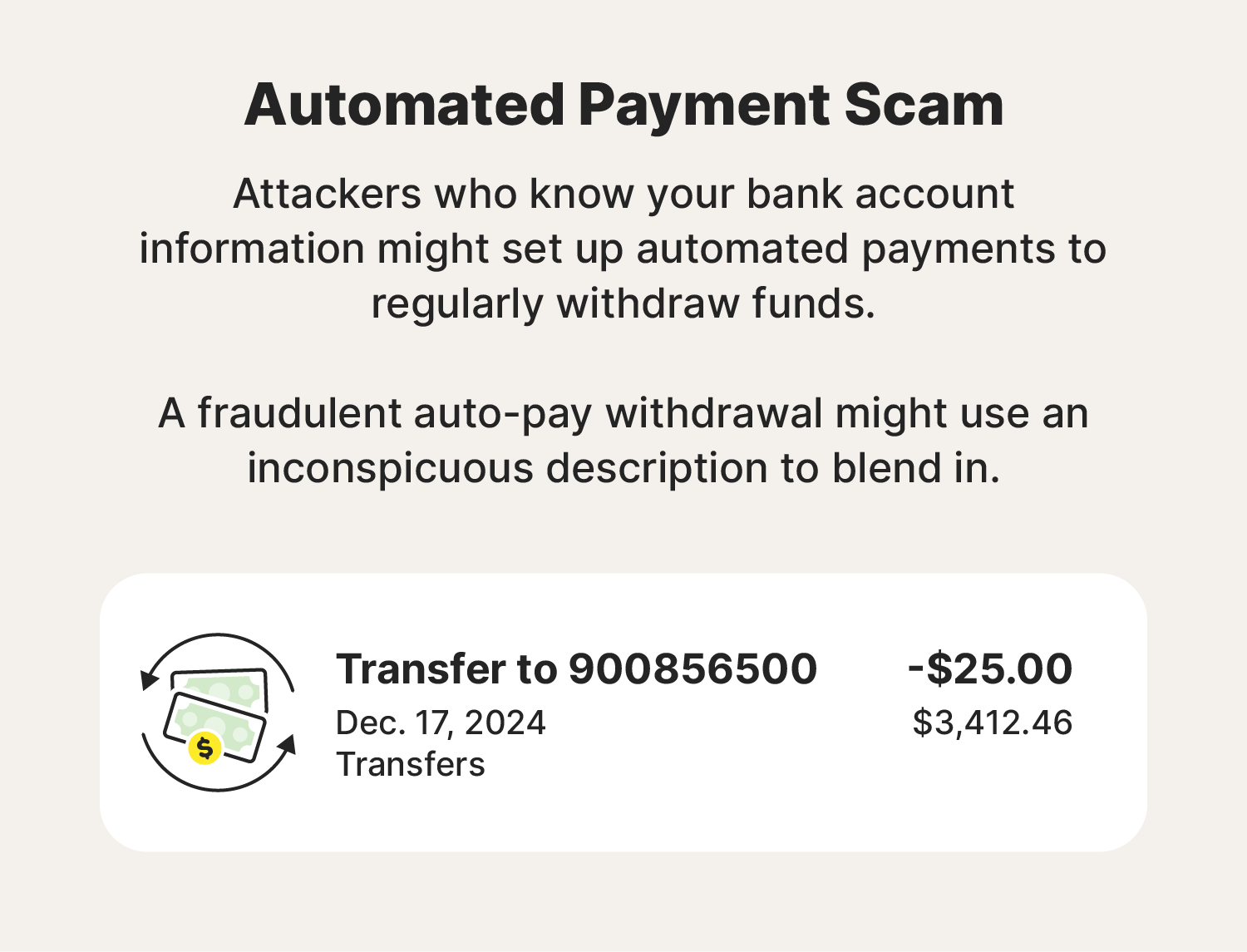
- Identify an automated payment scam: Use your mobile banking app to look for withdrawals you don’t recognize. Scammers usually enter an obscure description so that you won’t catch them immediately.
- Avoid an automated payment scam: Review your bank statements every month and investigate unfamiliar charges.
How can you tell if someone is trying to steal money from your bank account?
Cybercriminals typically use social engineering tricks, like pretending to be a bank teller or investment broker, to commit bank account fraud. However, you might notice different warning signs if they accessed your account using login combos they found on the dark web, through a brute-force attack, or a data breach.
Regardless of how they steal your information, here are some red flags to watch out for:
- Unusual requests for money: A legitimate bank employee won’t ask you to wire money or send cryptocurrency to pay fees or make an investment.
- Unfamiliar charges: An attacker who has already accessed your account can use your account and routing numbers to make online purchases.
- Unsolicited messages and suspicious links: Attackers who couldn’t find your information online might resort to sending phishing links, tricking you into revealing sensitive information.
- Pressure tactics: Legitimate banks have an incentive to get members to buy into investments, but they won’t urge you to decide without allowing you to ask questions.
- Fraud alerts from your bank: Alerts about unauthorized transactions or credit applications can signal that someone has accessed your account and is actively using it.
5 ways to protect yourself from banking scams
You trust your bank, and hackers know that. That’s why they’ll use the financial institution’s earned trust to exploit you and disappear with your savings. Fortunately, with a proactive approach to banking security, you can keep fraudsters away from your account.
Here are the top five ways to safeguard your accounts:
1. Set secure passwords
Secure your accounts with strong and secure passwords. This makes it harder for hackers to guess your login credentials with tactics like brute force attacks. As a second line of defense, consider setting up two-factor authentication (2FA)—this prevents hackers from getting into your bank account even if they have the right login combination.
2. Avoid using unsecured Wi-Fi networks
Most of us need to connect to guest Wi-Fi at some point, regardless of the risks. However, you should avoid discussing personal information or purchasing until you disconnect from the unsecured network. Otherwise, hackers might successfully intercept your banking details with man-in-the-middle or packet sniffing attacks. And if you do use a public network, be sure to use a mobile VPN to keep your connection safe from prying eyes.
3. Consult financial advisors
Sometimes, scammers pose as someone from your bank and send you bogus loan or investment offers. If this happens to you, talk to the advisors at your bank to determine if the offer you received is legitimate and learn more about the opportunity. Be on the lookout for fake texts and email scams, especially when they come from unverified channels, and ask you to click a link to learn more.
4. Download mobile banking apps from secure platforms
Only download mobile banking apps through the financial institution’s website or a reputable app store to avoid spoofing and malicious communications. Even if your bank does send you texts and emails, you should still switch to the app or some other secure channel to reply. This can help keep discussions about your finances private and avoid clicking on bad links.
5. Invest in identity theft protection
Identity theft protection is a savvy way to protect your finances because it can help you catch suspicious activity before the damage is done. Advanced services like LifeLock Ultimate Plus even assist with bank account withdrawal, balance transfer, and takeover alerts, giving you a bird’s eye view of your finances and potential threats.
Strategies to recover from bank fraud
As if bank scams aren’t stressful enough, you’ll also need to take swift action to ensure your money isn’t permanently lost. Here’s what you need to do to recover your account and any money stolen from it:
- Talk to your bank: Inform them about the scam so they know to monitor your account for fraud. They can also tell you more about how to recover the money you lost.
- Freeze the affected accounts: Set up a credit freeze and replace your debit card to stop unauthorized withdrawals.
- Change your passwords: Update your login details and PINs so the hacker can’t break in again.
- File a police report: Create a paper trail to increase your chances of getting your money back.
- Monitor your bank accounts: Check your credit score and other financial accounts in the months following a bank scam to be sure the hacker doesn’t steal more money or open new accounts in your name.
Powerful protection against bank scams and identity theft
No matter how careful you are, some threats may still slip through. That’s why you should safeguard your online banking accounts with powerful data and identity theft protection.
LifeLock Ultimate Plus offers ironclad protection by monitoring your accounts and flagging high-risk transactions. And in the event your funds or identity are stolen, you’ll get expert technical and legal help during the recovery process. Get trusted identity protection today.
FAQs about bank account scams
Still have questions about bank scams in 2024? Here’s what you need to know.
Why was I targeted in a banking scam?
Sometimes, attackers don’t deliberately target you at all. Instead, they launch a wide-scale phishing campaign to catch as many people in their net as possible. However, if a cybercriminal targets you specifically, it’s typically for one of these reasons:
- You’re active on social media and don’t have enough security measures in place.
- Your account details have been exposed via a data breach.
- Cybercriminals believe that you have a lot of money or assets.
- The fraudster has a personal vendetta against you.
Can someone use my identity to defraud others?
Yes, it’s possible for a cybercriminal to impersonate you and commit financial fraud targeted at other people—especially if you’re professionally associated with a bank.
How can someone steal money from my bank account?
Someone might steal money from you by taking over your account directly, or by using a card skimmer. To keep these things from happening, take the following precautions:
- Only use ATMs in well-lit and highly trafficked areas.
- Cover the ATM’s keypad when you enter your PIN.
- Enable transaction alerts.
- Regularly review bank statements.
- Pay with virtual cards.
- Don’t enter banking details on unsecured networks.
- Use 2FA on mobile banking sites and apps.
- Never click a link without verifying the sender’s identity.
How can I tell the difference between phishing and a message from my bank?
A legitimate message should:
- Not have spelling and grammatical errors.
- Be sent from an official email address.
- Address you by name.
- Avoid urgent language and inappropriate demands.
Editor’s note: Our articles provide educational information. LifeLock offerings may not cover or protect against every type of crime, fraud, or threat we write about.
This article contains
Start your protection,
enroll in minutes.
LifeLock is part of Gen – a global company with a family of trusted brands.
Copyright © 2025 Gen Digital Inc. All rights reserved. Gen trademarks or registered trademarks are property of Gen Digital Inc. or its affiliates. Firefox is a trademark of Mozilla Foundation. Android, Google Chrome, Google Play and the Google Play logo are trademarks of Google, LLC. Mac, iPhone, iPad, Apple and the Apple logo are trademarks of Apple Inc., registered in the U.S. and other countries. App Store is a service mark of Apple Inc. Alexa and all related logos are trademarks of Amazon.com, Inc. or its affiliates. Microsoft and the Window logo are trademarks of Microsoft Corporation in the U.S. and other countries. The Android robot is reproduced or modified from work created and shared by Google and used according to terms described in the Creative Commons 3.0 Attribution License. Other names may be trademarks of their respective owners.


